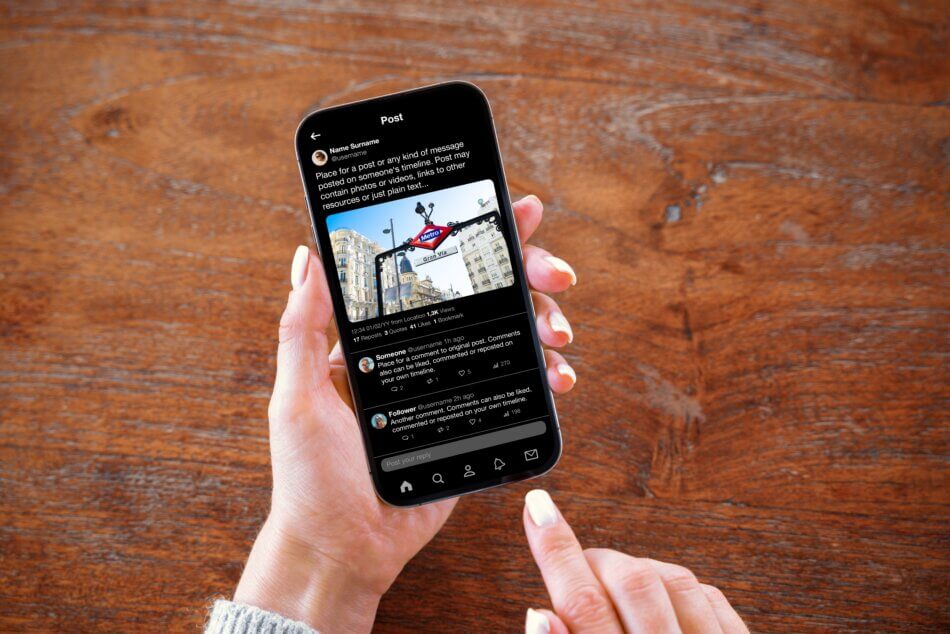Understand PHP vs IOP
Before you decide on a day treatment model, it helps to understand how a partial hospitalization program (PHP) and an intensive outpatient program (IOP) differ. Both options provide structured therapeutic support while you live at home, but they vary in intensity, schedule, and clinical oversight. By comparing these levels of care, you can align your needs—whether stepping down from residential treatment or stepping up from weekly therapy—with the right setting.
What is a partial hospitalization program
A partial hospitalization program, or PHP, delivers a comprehensive, daylong treatment model without requiring overnight stays. You’ll engage in at least 20 hours of therapeutic services per week, typically spread over five days. Services often include individual counseling, group therapy, skills workshops, and medication management.
Key features of a PHP:
- Schedule: 4–6 hours per day, five days a week
- Therapy mix: individual sessions, multiple group modalities, psychoeducational workshops
- Clinical oversight: daily psychiatrist visits and nursing support
- Ideal for: stepping down from inpatient or residential care, or preventing hospitalization
PHPs offer intensive clinical support while you return home each evening. For more details, explore our guide to partial hospitalization program for adults or read about php mental health treatment for adults.
What is an intensive outpatient program
An intensive outpatient program, or IOP, provides flexible scheduling for adults who need more support than once-weekly therapy but can maintain work, school, or family routines. You’ll participate in 9–20 hours of therapy per week, divided into group sessions, individual counseling, and skills training.
Core components of an IOP:
- Frequency: three to five sessions per week, each lasting 2–4 hours
- Therapy mix: group therapy, one-on-one counseling, psychoeducation
- Clinical oversight: regular psychiatric check-ins, often weekly
- Ideal for: moderate-level symptoms, early recovery, transitioning out of higher care levels
An IOP strikes a balance between intensive support and daily independence. To learn more, see our intensive outpatient program for adults.
Explore group and individual therapy
Therapy integration lies at the heart of both PHP and IOP models. You’ll benefit from a combination of group and individual modalities that target symptom management, coping skills, and relapse prevention. This tailored treatment approach fosters self-reflection, peer support, and personalized care strategies.
Group therapy integration
Group therapy serves as a cornerstone of your structured day treatment. In a supportive environment, you’ll share experiences and practice new skills alongside peers facing similar challenges. Typical group formats include:
- Dialectical behavior therapy (DBT) skills groups
- Cognitive behavioral therapy (CBT) workshops
- Psychoeducational sessions on stress management, relapse triggers, and emotional regulation
- Process-oriented groups focusing on interpersonal dynamics and communication
For example, The Menninger Clinic’s Adult PHP integrates DBT, CBT, and experiential therapies such as narrative and recreational groups to foster peer support and comprehensive care (Menninger Clinic). This supportive environment helps you build accountability and practice coping strategies in real time.
Individual therapy integration
Individual sessions allow you to explore personal goals, address co-occurring issues, and refine coping techniques in a one-on-one setting. Benefits of individualized care include:
- Deep dive into underlying thoughts and behaviors
- Tailored coping strategies for anxiety, depression, trauma, or substance use
- Medication management and psychiatric evaluation
- Privacy to set and review personal treatment goals
In an IOP, you might follow guidelines for iop therapy for adults with depression or stress. In PHPs that emphasize trauma work, you can engage in php therapy for trauma and emotional regulation. These individualized plans ensure your care addresses your unique presentation.
Compare program structures
Choosing between PHP and IOP often comes down to schedule demands, therapy intensity, and clinical oversight. The table below outlines key structural differences:
| Feature | PHP | IOP |
|---|---|---|
| Weekly hours | 20+ | 9–20 |
| Daily schedule | 4–6 hours, five days a week | 2–4 hours, three to five sessions per week |
| Group versus individual ratio | 60% group, 40% individual (approximate) | 50% group, 50% individual (approximate) |
| Psychiatric involvement | Daily psychiatrist or nursing contact | Weekly psychiatrist check-in |
| Ideal entry points | Transition from inpatient/residential | Stepping up from weekly therapy |
| Home/community integration | Evening return, real-world application | Maintain most daily responsibilities |
| Treatment length | 4–8 weeks | 4–12 weeks |
Beyond these contrasts, consider how each program transitions you between levels of care. Many providers design personalized stepping-stone plans, allowing you to move from PHP to IOP as you gain stability, or vice versa if you need more clinical support.
Evaluate insurance acceptance
Insurance coverage can make structured day treatment accessible and affordable. Acceptance varies by program type, provider, and plan. Below, you’ll find an overview of common coverage options and out-of-pocket considerations.
Medicare and Medicaid coverage
Under Medicare Part B, mental health care intensive outpatient program services are covered at hospitals, community mental health centers, federally qualified health centers, and rural health clinics. You pay 20% of the Medicare-approved amount after meeting the Part B deductible (Medicare.gov). Similarly, Medicare may cover partial hospitalization services if you require at least 20 hours of therapeutic care per week, provided through hospital outpatient departments or community mental health centers, subject to assignment acceptance (Medicare).
Some state Medicaid plans follow Medicare guidelines for PHP and IOP coverage, though eligibility and service limits can vary. Contact your local Medicaid office for specifics on assignment and service authorization.
Private insurance and out-of-pocket costs
Many private health plans recognize PHPs and IOPs as essential health benefits under the Affordable Care Act. However, you’ll want to confirm:
- Network participation and in-network vs out-of-network costs
- Copays or coinsurance for therapy, psychiatry, and group services
- Deductible status and out-of-pocket maximums
Without insurance, you can expect average costs of:
- PHP: \$200–\$600 per day
- IOP: \$250–\$500 per day (approximately \$5,000–\$10,000 per month)
Recovered.org and AMFM Treatment report these ranges based on program intensity and location (Recovered, AMFM Treatment).
Other coverage options
- TRICARE covers authorized PHP facilities for medically necessary mental health and substance use disorder services (TRICARE).
- Community mental health centers and nonprofit clinics may offer sliding-scale fees or payment assistance.
- Some employers provide employee assistance programs (EAP) that subsidize outpatient day treatment.
For more details on programs that work with insurers, see partial hospitalization that accepts insurance and intensive outpatient therapy that accepts insurance.
Identify key benefits
Both PHPs and IOPs deliver a supportive environment and tailored treatment programs designed to help you build lasting recovery skills. Key advantages include flexibility, comprehensive care, and community connection.
Flexibility and independence
- Attend therapy around your work or school schedule
- Return home nightly to practice coping strategies in real life
- Engage with family or support networks between sessions
An IOP often provides evening and weekend sessions, while PHPs maintain daytime hours. This flexibility empowers you to maintain independence while accessing the support necessary for lasting recovery.
Structured clinical support
- Regular psychiatric evaluations and medication management
- Evidence-based therapeutic approaches like CBT, DBT, and experiential therapies
- Coordinated care teams including therapists, nurses, and case managers
This level of clinical quality ensures you receive a consistent, individualized plan that adjusts as you progress.
Community and peer connection
- Group therapy fosters accountability, empathy, and mutual support
- Shared experiences reduce isolation and build trust
- Skills practice in a safe, supervised setting
Overall, community integration is a catalyst for growth. By connecting with peers who understand your journey, you’ll strengthen motivation and resilience.
Choose your treatment level
Selecting the appropriate program requires thoughtful assessment of your clinical needs, personal circumstances, and long-term goals. Use the guidance below to decide which level—PHP or IOP—best aligns with your recovery plan.
Assess your care needs
Begin by reviewing:
- Symptom severity and daily functioning
- History of crisis events or hospitalizations
- Current support network at home or work
- Need for medication adjustments or frequent monitoring
If you’re stepping down from inpatient care or require intensive daily oversight, a PHP may suit you. If you need moderate support while maintaining daily routines, an IOP is often ideal. You can also explore specialized tracks like php and iop for adults with co-occurring disorders or iop for adults with bipolar or mood instability.
Questions to ask providers
When evaluating programs, consider asking:
- How many hours per week will I attend?
- What is the ratio of group to individual therapy?
- How often will I meet with a psychiatrist?
- Does this program accept my insurance plan?
- What is the typical length of participation?
- How do you handle transitions between care levels?
These questions help ensure the program’s structure and clinical quality match your expectations.
Factors to consider
- Location and commute time
- Session scheduling flexibility (evenings/weekends)
- Accreditation and staff credentials
- Availability of specialized therapies, such as trauma recovery or emotional regulation
- Opportunities to involve family or caregivers
For more on structured day programs, see structured day treatment for adults.
Plan your next steps
Once you’ve narrowed your options, follow these steps to launch your treatment journey:
Verify your insurance coverage
- Contact your insurer to confirm network status and out-of-pocket costs
- Request pre-authorization if required
- Ask about assignment acceptance and facility billing practices
Request an intake assessment
- Reach out to your primary care provider, therapist, or the treatment center
- Complete a clinical intake questionnaire covering history, symptoms, and goals
- Schedule a consultation call or in-person evaluation
Prepare for your first session
- Gather insurance cards, ID, and medication list
- Write down your treatment objectives and questions
- Plan transportation and arrange any necessary time off work or school
If you need additional resources or want to compare programs side by side, explore our day treatment for adults that accepts insurance and outpatient day program for mental health recovery.
Your path to balanced, structured care starts with the right information and support. Whether you choose an IOP for its flexibility or a PHP for its clinical intensity, both tracks offer tailored treatment programs and comprehensive care designed to help you thrive. Reach out today to verify your coverage, schedule an assessment, and take the first step toward lasting recovery.










